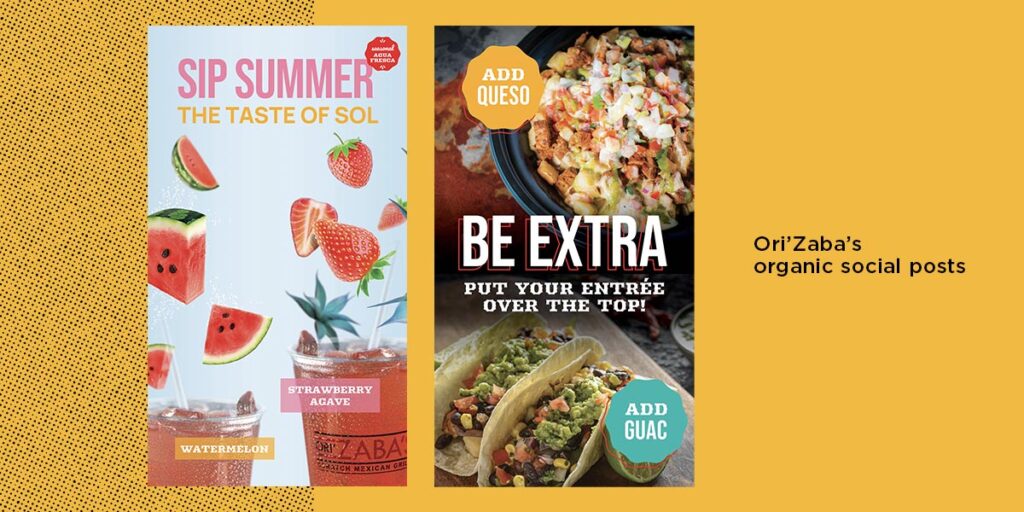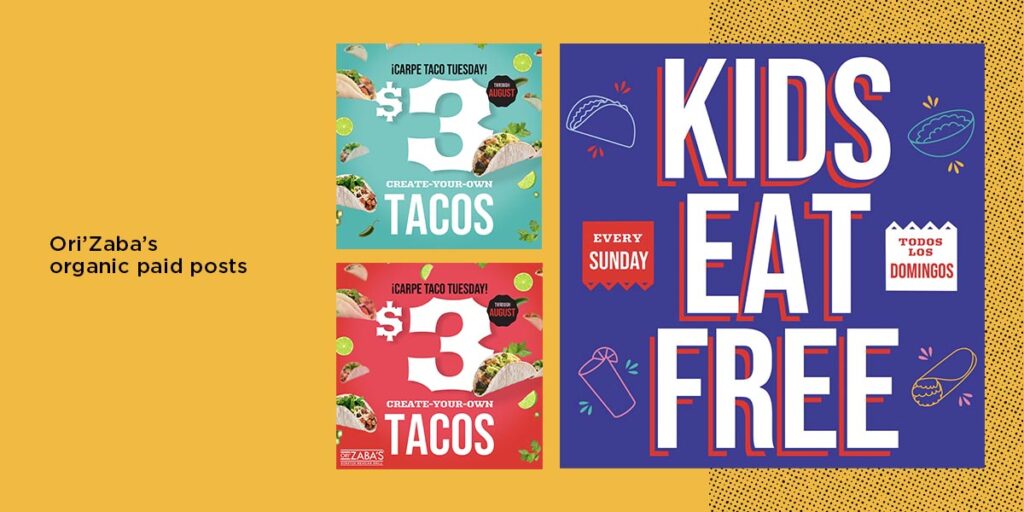
In today’s fast-paced digital era, the success of any business relies heavily on its ability to navigate the complex world of online marketing. For beginners, this landscape can be overwhelming, with countless strategies and available platforms. This guide aims to demystify digital marketing, providing an essential overview of digital advertising, organic and paid social media, content marketing and search engine optimization (SEO). We’ll delve into tips, best practices, current trends and great examples to help you kickstart your digital marketing journey.
Understanding Digital Marketing
Digital marketing encompasses a broad spectrum of online strategies designed to promote and sell products or services. Unlike traditional marketing, digital marketing leverages the power of the internet to reach a global audience. The ability to target a particular audience with digital marketing makes it both cost efficient and effective. Another benefit is that marketers can track the performance of their ads, website, social posts and emails to fine tune their strategies for maximum impact. Let’s explore some of the most common types of digital marketing.
Digital Advertising
Digital advertising is when companies pay a publisher, such as CNN.com, GoodHousekeeping.com or ESPN.com, for space on their webpages. Those ads are available in different sizes and can be static or animated to attract more attention. Users who are interested in the product or service can click on the ads to be taken to the brand’s relevant webpage, where they can learn more or make a purchase. It’s a quick way to increase visibility, but success depends on targeting the right audience.
For your digital ads to achieve your goals, it’s important to first define your target audience so you can optimize ad targeting. For example, if you’re selling men’s razors, ESPN.com will have a heavier concentration of your audience than GoodHousekeeping.com. Most websites selling ad space offer a media kit that includes information on their visitor demographics, traffic, prices and available media placements.
With your target audience in mind, create ads with compelling visuals and concise copy to grab attention. A good rule of thumb is to keep the copy brief so it is easily legible and can be scanned quickly. Keep headlines between five and 10 words, and always include a call to action (CTA) button to promote the desired outcome, such as “Shop Now,” “Add to Cart,” “Subscribe” or “Donate.”
Once your campaign is running, you should monitor and adjust it based on performance metrics, such as the click-through rate, cost per click and conversion rate. A/B testing is a handy tool to evaluate your campaign in real time. With an A/B test, you can serve slight variations of the same ad to your audience to determine which creative execution or message resonates best. Rivers Agency implemented this best practice in our MarCom Awards gold-winning digital campaign for Mulesoft. For more inspiration, check out this year’s digital campaign winners for The Webby Awards.

Social Media Marketing
Social media platforms provide a powerful avenue for connecting with your audience, building brand awareness and driving traffic. Each platform has unique audience demographics and engagement styles, making it crucial to tailor your approach accordingly.
While legacy platforms like Facebook, X (formerly Twitter), YouTube, LinkedIn and Instagram have the largest daily user base, niche sites could also help you tap into a specific audience, such as Twitch for gamers, Pinterest for the DIY crowd and TikTok for Gen Z. Choose platforms that align with your target audience and create a business profile page for your brand.
Organic Social Media
On social media sites, content is king, so it’s important to have a consistent posting cadence to provide your followers with information or entertainment. For some brands, this could be daily, while others may only want to post once a week. Whatever your preference, create a schedule and stick to it. Other than production-related costs, there is no fee to post content on your social channels; however, not all your followers will see everything you put on your page in their feeds.
Using a mix of content types will make visiting your page more interesting for your followers. Alternate between posts featuring images, videos, polls, text and reshares of user-generated content (UGC). Social media is a two-way street, so your followers will expect interaction with your brand. Respond promptly to comments and messages to improve community engagement. Each of these platforms offers analytics for tracking the performance of individual pieces of content so you can adjust your strategy once you know what gets the best engagement.

Paid Social Media
Unlike organic social media, which is content shared and spread without monetary investment, paid social media involves paying for advertisements to reach a specific audience. This can include sponsored posts, display ads, video ads and other formats. The benefit of paying to post on social media is to guarantee your content is viewed, and it also affords you the opportunity to target your audience on a wide variety of factors, including geography, interests, hobbies and behaviors. You can easily control your ad spending by setting daily limits to align with your marketing budget.
The best social strategy incorporates both organic and paid posts, as the former will help build long-term relationships and trust, while the latter will effectively reach a broad audience quickly and target more specifically.

Content Marketing
Content marketing involves creating and sharing valuable, relevant content to attract and retain a specific audience. This can include emails, blog posts, videos, infographics, SEO and more. The goal is to establish authority in your industry and drive profitable customer actions.
To achieve successful content marketing, you should first seek to understand your audience’s pain points and address them. For example, if you’re a bank and want to start a campaign targeting college students, sharing content about the basics of financial education is a great way to introduce your brand. This can help to raise awareness of your brand before making a more direct marketing pitch.
Email is another effective medium for reaching your audience. You can collect customers’ email addresses or purchase lists from third-party data companies. The more data you have on each person, the better, as it allows you to segment emails by the offer, such as sending a coupon for spicy pasta sauce to someone who bought it over the past six months. Action-oriented subject lines will help to boost open rates, and relevant content with deals, specials, important news and helpful tips are popular with recipients.
Content marketing is a great opportunity to leverage storytelling to forge emotional connections with your audience. To maximize the value you get out of each piece of content you produce, repurpose it for different formats, such as using a paid social creative in your email, or editing a video on your website into 10-second clips to post on social media. Actions like this can stretch your budget further.

Search Engine Optimization
SEO is the practice of optimizing your website to rank higher in search engine results on sites like Google, Yahoo and Bing. With the right SEO strategies, you can enhance the visibility of your website and drive more organic traffic to it.
To improve your website’s SEO, start by conducting keyword research. Keywords are the terms you want to show up for and phrases you expect customers to type into the search bar to find you, such as “socially responsible diamonds,” “hand-woven rugs” or “authentic Mexican food near me.” Incorporate these words throughout your page, especially in headlines, subheads and meta data to enhance your visibility.
Meta data helps search engines determine what your site is about and how relevant it is to a user’s query to decide how it ranks on the search engine results page (SERP). Include accurate meta titles and meta descriptions for all your pages to improve how your website is indexed. As a best practice, a meta title should be between 30 and 60 characters so it can display in full on the SERP, include keywords and summarize what the page is about. The meta description is where you can provide more information about the page and a call to action, and it should be kept to 155 characters or less. Be sure to also include image alt text. The alt text briefly describes the content of an image so screen reader software can interpret it for those who are visually impaired.
Since the web was designed to help users move around and explore, you should include both internal and external links throughout your website. Internal links should help users journey through your site, such as starting on the homepage, clicking on a product they’re interested in, then visiting the customer reviews to determine if they would like to make a purchase. You can also include links to relevant third-party sites, such as partners, retailers who carry your brand and news articles that feature your company. It’s also important to have external websites link back to your site, which is known as backlinking. Having quality backlinks from reputable websites shows authority on a topic and confidence from those sites, which help to improve your search rankings.
As you build your website, keep in mind that 55 percent of online traffic comes from mobile devices, so you need to design a site that is both desktop and mobile-friendly. This ensures an optimal user experience, regardless of how your website is accessed. Regularly updating content will give users a reason to return and help your site maintain relevance amongst search engines.
For more tips on mastering your SEO, check out our blog.
General Tips for Successful Digital Marketing
Regardless of the digital medium through which you choose to market your brand, always start with a defined set of goals for your campaign. Your goals should align to your overall business objectives, such as increasing sales, recruiting employees or expanding into new geographies. This will help you measure how effective your efforts are in achieving your objectives and indicate when adjustments are needed.
Make sure you understand your audience so you can tailor your messages to their wants and needs. Use analytics tools to gather insights into user behavior and monitor your campaign so you can iterate based on performance metrics. As a brand, you want to be consistent across different channels, so apply a coherent look and tone to everything from social media to paid ads. Lastly, keep up with emerging trends by experimenting with tools and platforms that can keep your brand ahead of the curve.
Digital marketing is a dynamic and ever-evolving field, making it both exciting and challenging for beginners. By understanding the different types of digital marketing, incorporating best practices, staying ahead of current trends and drawing inspiration from successful examples, you can create a robust digital marketing strategy that propels your business to new heights. Remember, experimentation, adaptability and a customer-centric approach are key to succeeding in the digital landscape.
If you need more resources to launch a digital campaign, Rivers Agency’s digital media experts can help you build a strategy and develop creative. Fill out our contact form today to get started!